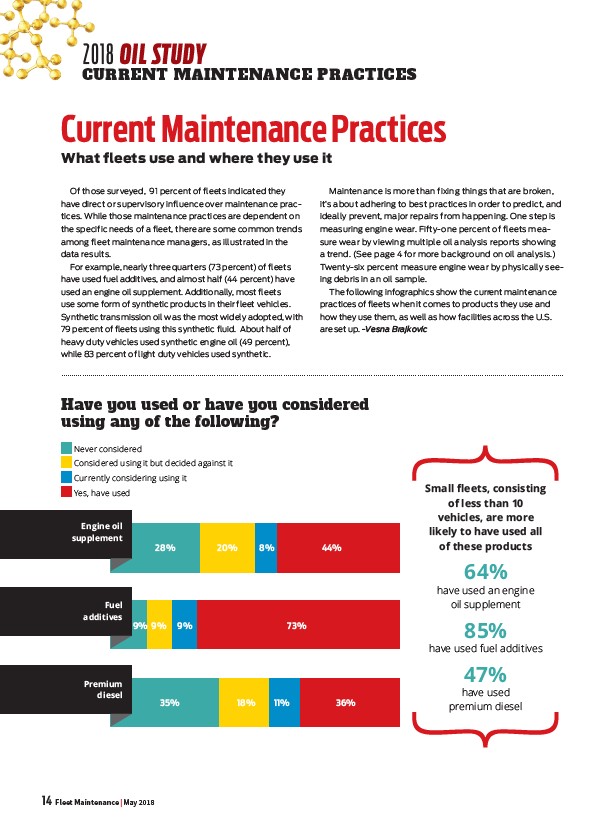
2018 OIL STUDY
CURRENT MAINTENANCE PRACTICES
Current Maintenance Practices
What fl eets use and where they use it
Of those surveyed, 91 percent of fleets indicated they
have direct or supervisory influence over maintenance practices.
While those maintenance practices are dependent on
the specific needs of a fleet, there are some common trends
among fleet maintenance managers, as illustrated in the
data results.
For example, nearly three quarters (73 percent) of fleets
have used fuel additives, and almost half (44 percent) have
used an engine oil supplement. Additionally, most fleets
use some form of synthetic products in their fleet vehicles.
Synthetic transmission oil was the most widely adopted , with
79 percent of fleets using this synthetic fluid. About half of
heavy duty vehicles used synthetic engine oil (49 percent),
while 83 percent of light duty vehicles used synthetic.
14 Fleet Maintenance | May 2018
Maintenance is more than fixing things that are broken,
it’s about adhering to best practices in order to predict, and
ideally prevent, major repairs from happening. One step is
measuring engine wear. Fifty-one percent of fleets measure
wear by viewing multiple oil analysis reports showing
a trend. (See page 4 for more background on oil analysis.)
Twenty-six percent measure engine wear by physically seeing
debris in an oil sample.
The following infographics show the current maintenance
practices of fleets when it comes to products they use and
how they use them, as well as how facilities across the U.S.
are set up. -Vesna Brajkovic
Have you used or have you considered
using any of the following?
Never considered
Considered using it but decided against it
Currently considering using it
Yes, have used
28% 20% 8% 44%
Engine oil
supplement
9% 9% 9% 73%
Fuel
additives
35% 18% 11% 36%
Premium
diesel
Small fleets, consisting
of less than 10
vehicles, are more
likely to have used all
of these products
64%
have used an engine
oil supplement
85%
have used fuel additives
47%
have used
premium diesel